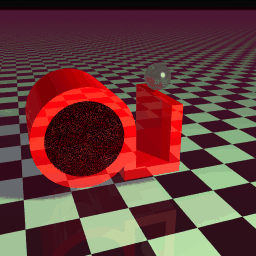Tenth Anniversary of the Austrian Research Institute for Artificial Intelligence and Twenty-fifth Anniversary of the Austrian Society for Cybernetic Studies

In 1969 young Austrian scientists decided to promote the ideas of cybernetics and systems research in Austria and in its capital, Wien (Vienna), especially since the founder of cybernetics was Norbert Wiener.
Obeying the unwritten rules of Austrian bureaucratic procedures - a persisting heritage of the centuries long monarchic tradition - they first founded a Society, named the "Österreichische Studiengesellschaft für Kybernetik (OSGK)" (Austrian Society for Cybernetic Studies), had it registered, and started with activities:
- Lectures by invited scientists, mostly from abroad (up to now 253),
- seminars,
- research projects (among them dangerous ones, e.g. a Simulation Model of the Austrian Health Care System - nobody wanted to know the results!)
- a journal named "Cybernetics and Systems: An International Journal", (still) published - now even bimonthly! - by Taylor & Francis, Washington, DC, and
- a conference.
Since they didn't know how many scientists really would participate in that conference, and if, at all, any would show up from abroad (besides perhaps one or two Germans), they anxiously named it European Meeting on Cybernetics and Systems Research, "Meeting" being an appropriate name even if less than a dozen people would attend it.
Surprisingly, more than eighty came, and since then (1972) this conference, held biennially and still called "Meeting" has developed into the world's leading conference on cybernetics and systems research: at the 1994 conference 238 papers were presented, and 408 scientists from 42 countries from all continents (except the Antarctica) participated. Up to now, 22 volumes of conference proceedings have been published, by publishers from England, the USA, the Netherlands, Singapore,... (each time a publisher realized that he could only lose money by publishing the proceedings, it was necessary to switch to another one ;-))
In 1984, the Austrian Government decided on a special program to foster microelectronics and information processing in Austria. Thus, the Austrian Federal Ministry of Science and Research invited the OSGK, being known for doing already quite a lot of research in artificial intelligence, to found the "Österreichisches Forschungsinstitut für Artificial Intelligence (OFAI)" (you got the last words, the first three mean "Austrian Research Institute for") which, in the mean-time.... but in all likelihood you have found already all this information in the other pages of our WWW-server.
The event
On the occasion of the above-mentioned anniversaries, the Austrian Federal Minister of Science and Research and Vice-Chancellor of the Republic of Austria, Dr.Erhard Busek, invited to the Festival Halls of his Ministry, where on Thursday, November 17, 1994, speakers from Austria, Switzerland, Germany, Italy, and the United States are giving an overview about current topics in cybernetics and artificial intelligence, thereby explicating the important position of these sciences both in Austria and world-wide and indicating the directions of future research, applications, and potential implications for humankind.
The Austrian Federal Minister of Science and etc. (see above) Dr.Erhard Busek, welcomes the speakers and the participants and opens the festival meeting.
Prof.Robert Trappl, director of the Austrian Research Institute for Artificial Intelligence, and president of the Austrian Society for Cybernetic Studies (baroque titles, typical for Austria), gives a brief overview about the history and development of both organizations, explains the rationale behind the program (you know it already), and introduces the speakers (reduces their alloted time and adds to his).
Prof. Valentin Braitenberg, in his talk, speaks about language and how a theory of the brain can explain this remarkable human capability.
Prof. Franz Josef Radermacher points to possible consequences of current innovative research on human life. He cites examples from research on building intelligent robots, which - in his view - might lead to systems as cognitively powerful as humans, or even more.
Prof. Patrick Winston talks about how AI techniques can go beyond laboratory prototypes and be turned into products. Examples range from rationally designed drugs to miniature displays that enhance virtual reality. He says that he encourages his students to have wild dreams, but that they have changed their mind about what AI is about: It is no longer believed that AI is for replacing experts and that that could save money. Instead, applications are built to enhance our life and to create new opportunities.
Dr. Gerhard Widmer demonstrates how AI programs can be made to learn about musical expression from examples played to them. This is underlined acoustically, and impressively.
Prof. Nadia Magnenat-Thalmann introduces research at her lab on 3D virtual actors, which eventually should be able to respond to human users emotionally, and live autonomously in a virtual world.
After an exciting dance performance by Willi Dorner and Sonja Balaz (see picture above), Prof. Robert Trappl introduces the latest update of a comprehensive report on artificial intelligence research in Austria, comprising 152 projects.
The event is concluded with a reception by the Austrian Society for Cybernetic Studies, including a delicious buffet. Too bad, multimedia systems like this do not include the transmission of smell and taste, yet.